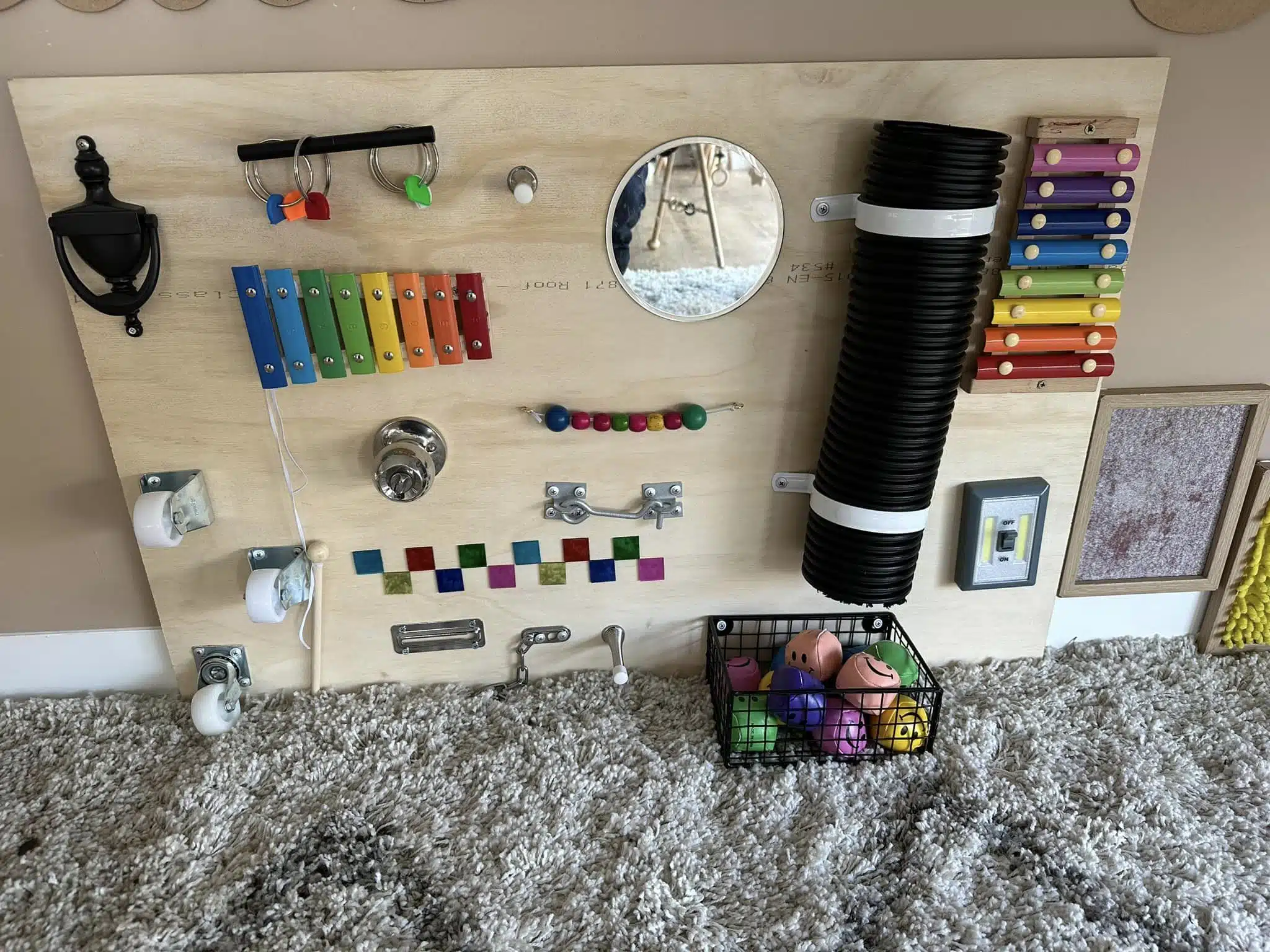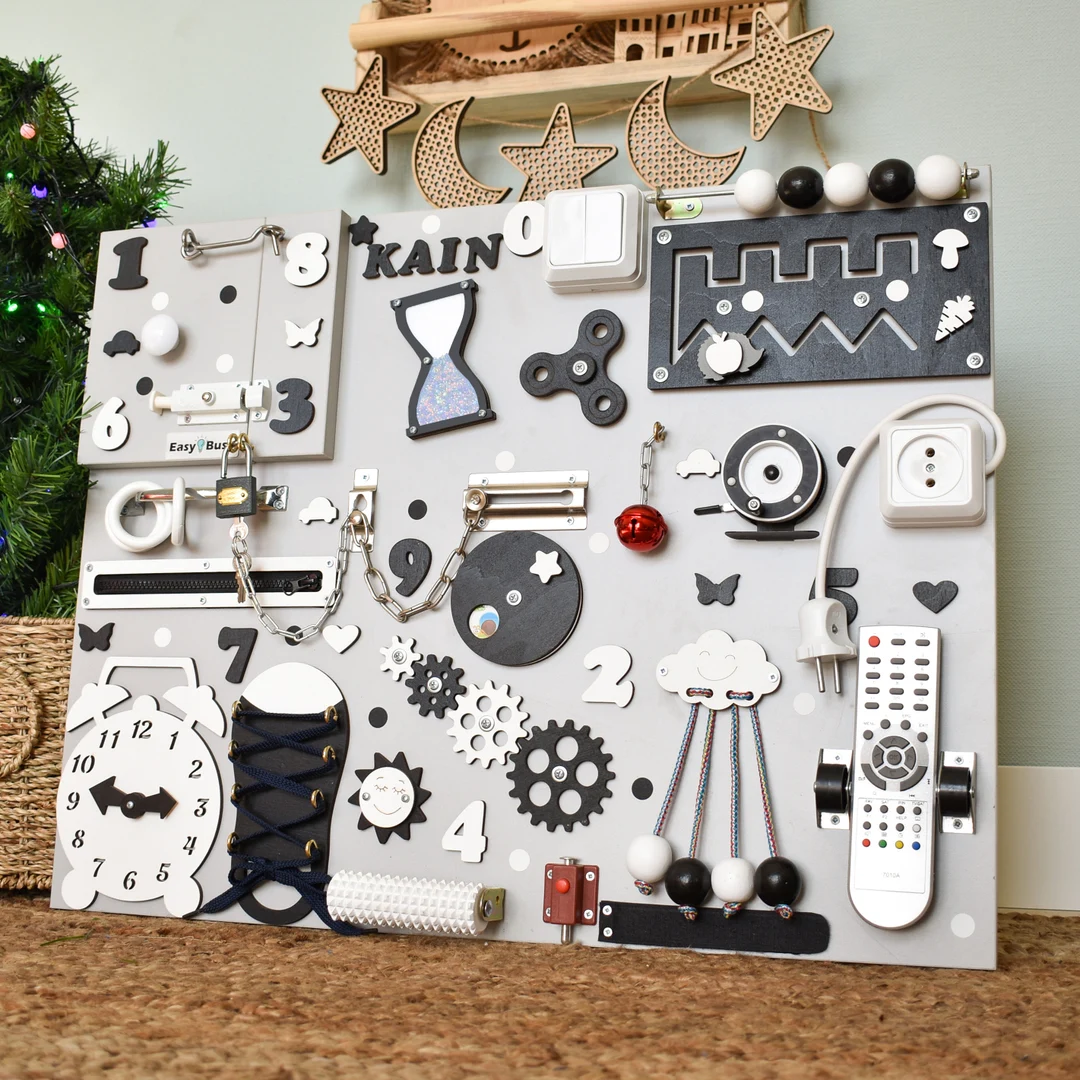Chưa được phân loại
The Great Sensory Board Showdown: Normal vs. Montessori
Let’s talk about sensory boards for a minute. If you’re a parent, teacher, or caregiver, you’ve probably encountered these colorful creations somewhere along your journey. They’re sturdy, interactive, and perfect for keeping little hands entertained while engaging their minds. But have you ever noticed that there are two different kinds? Yes, folks, I’m talking about the classic “normal” sensory boards and the Montessori sensory boards, both of which serve a purpose but in surprisingly different ways.

So grab your favorite cup of coffee or tea, settle in, and let’s dive into the fascinating world of sensory boards. By the end, you’ll have a clear understanding of their differences, and who knows, you might even feel inspired to create your own!
What is a Sensory Board Anyway?
Before we dig into the nitty-gritty of normal versus Montessori sensory boards, let’s establish what a sensory board actually is. Simply put, a sensory board is a tactile playground—a board adorned with various textures, knobs, buttons, and items that invite children to explore with their hands and minds. The main goal? To stimulate the senses: touch, sight, sound…you name it!
The “Normal” Sensory Board
Let’s start with the traditional sensory board, often referred to as a normal sensory board. These boards can take various forms and generally tend to include a wide array of engaging elements. Think of it as a sensory buffet where kids can sample whatever catches their eye!
Features of a Normal Sensory Board:
- Variety of Textures: Normal sensory boards feature an array of textures—smooth, rough, bumpy, you get the idea! Kids can rub, scratch, and squeeze different sections, which is great for developing tactile skills.
- Sound Elements: Many of these boards include bells, chimes, or other sound-producing elements. When little fingers press or pull, melodic sounds reward their exploration.
- Visual Stimulation: Colorful buttons, mirrors, and moveable pieces are often included to attract young eye-balls. Why are bright colors essential? They stimulate visual development and attract attention.
- Open-Ended Play: A normal sensory board often encourages a free-for-all sort of play. Kids can explore however they want, but this can lead to chaotic play that may not focus on any specific learning objective.
Pros of Normal Sensory Boards:
- Encourages exploration and creativity.
- Offers a wide range of experiences in one place.
- Simple to make at home with household items or bought components.
Cons:
- May lack structure and specific learning goals.
- Can lead to overstimulation if not monitored.

The Montessori Sensory Board
Now, let’s transition to the Montessori sensory board. The Montessori method, pioneered by Dr. Maria Montessori, focuses on child-led learning through exploration with specific objectives in mind. Montessori sensory boards are often more structured than their normal counterparts, designed to facilitate developmental skills through intentional play.
Features of a Montessori Sensory Board:
- Purposeful Design: Each aspect of the board has a purpose. For instance, a section may focus on fine motor skills while another nurtures cognitive problem-solving abilities. You won’t find random items here; instead, everything is thoughtfully chosen to promote specific skills.
- Real-Life Objects: Montessori boards may use kitchen tools, locks, buttons, or everyday items that children can manipulate. This approach fosters a sense of connection with the real world—much like mini parallel activities that mimic adult tasks.
- Less Visual Clutter: Unlike the colorful chaos of a normal sensory board, Montessori boards often emphasize simplicity and focus. They usually feature a neutral color palette and fewer distractions to help kids concentrate.
- Learning Goals: Each interaction is geared toward achieving a particular developmental milestone—be it fine motor skills, problem-solving, or sensory discrimination. This targeted approach helps children gain mastery over one skill before moving on to the next.
Pros of Montessori Sensory Boards:
- Encourages deep focus and mastery.
- Promotes independence in learning and exploration.
- Develops specific skills in a structured environment.
>>>Read more: Unlock Your Child’s Motor Skills with a Fun Montessori Activity: Locks and Keys
Cons:
- May require more planning and thought to create.
- Might not be as immediately engaging for every child as a color-splashing normal board.
Similarities and Key Takeaways
At first glance, normal and Montessori sensory boards might seem miles apart, but deep down, they share some core similarities. Both types aim to stimulate a child’s senses and support developmental growth. They promote hands-on learning, encourage creativity, and keep kids engaged.
So what’s the takeaway?
- Make it Work for You: Depending on your child’s learning style and needs, you may gravitate more toward one type of sensory board over the other. Maybe you love the structure of the Montessori approach, or perhaps the less formal, chaotic nature of a normal sensory board suits your child better. There’s no right or wrong answer—just what works best for you and the kiddos in your life.
- Mix and Match: If you love the variety offered by normal sensory boards but appreciate the structure of Montessori designs, consider creating a hybrid sensory board! It could include elements with specific learning goals, sprinkled with colorful textures and sound pieces for good measure.
- Don’t Overthink It: Ultimately, sensory boards are about exploration, learning, and fun. No matter which type you choose, the goal is to foster curiosity and joy in your little ones.

Get Crafty!
Feeling inspired to make your own sensory board? Grab some materials and create something that speaks to you! Whether it’s with everyday objects for a Montessori style board or a colorful, whimsical design for a normal sensory board, your DIY project will not only be engaging for kids but also a fun family activity.
And there you have it—the lowdown on the differences between normal sensory boards and Montessori sensory boards! Hopefully, you feel better equipped to choose the right sensory experience for your own little explorers. Happy crafting and exploring!
